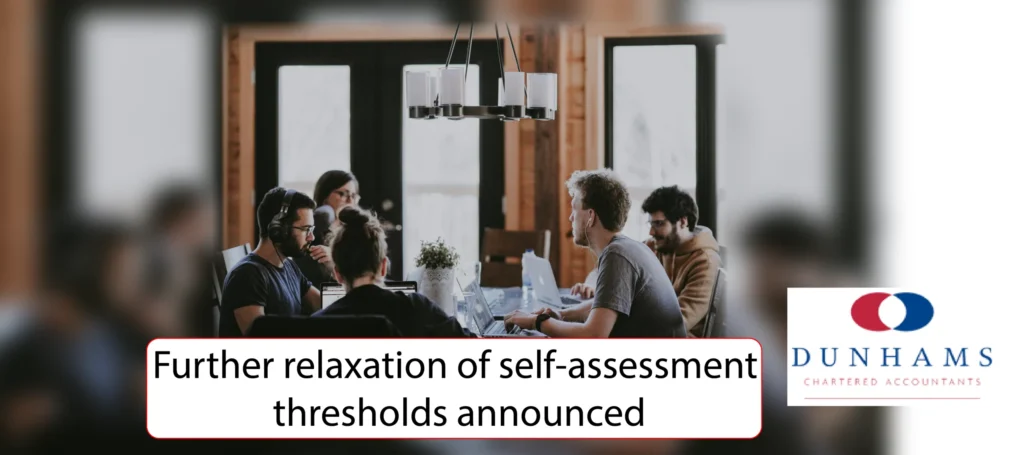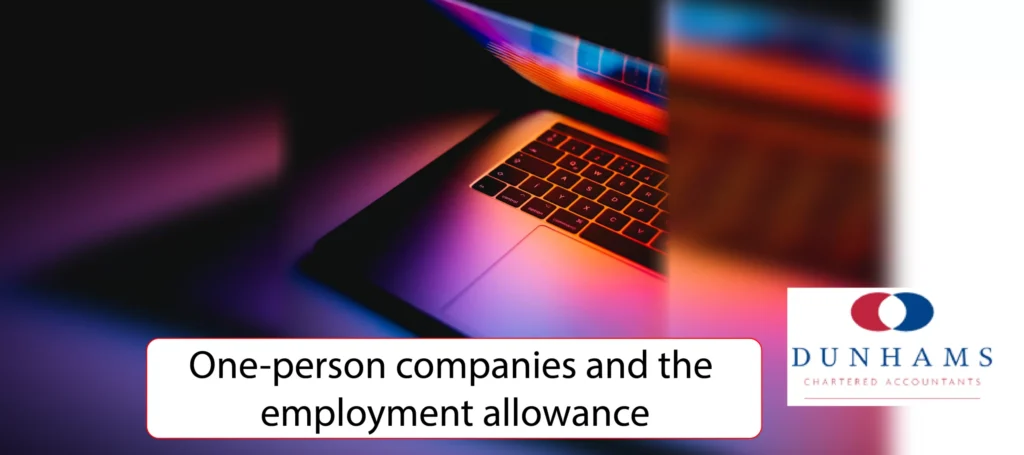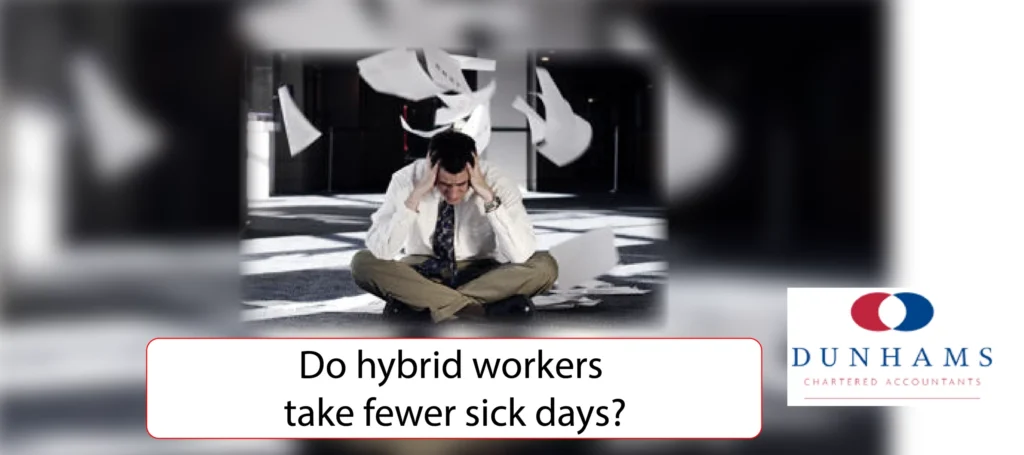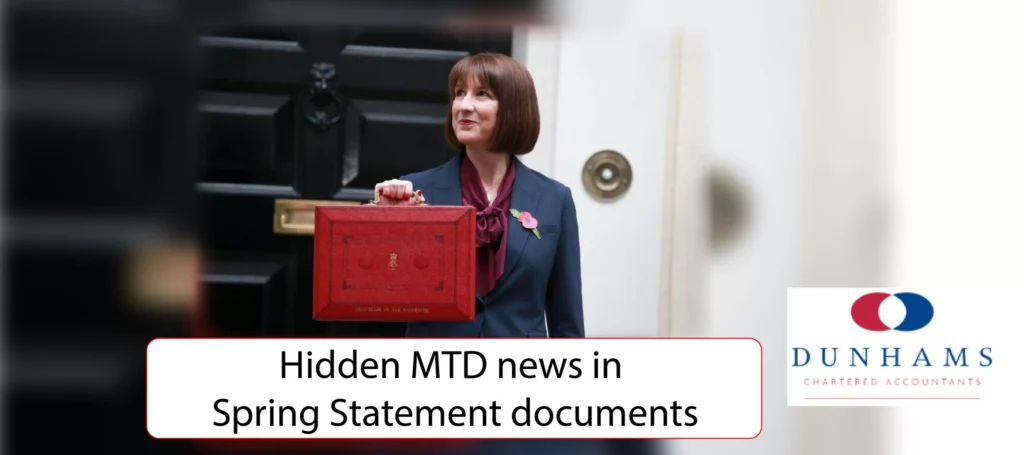What’s a trivial benefit worth to employers?

What’s a trivial benefit worth to employers? The tax and NI exemption for trivial benefits is much misunderstood, but nonetheless very useful to employers. When can you use it, what are its advantages and are there any pitfalls to watch out for? What’s a trivial benefit? As the name implies, a trivial benefit in kind is something that costs employers little which they provide to their employees as a perk of their job. It’s the cost to the employer that is the first hurdle that must be cleared (or rather ducked under) for a benefit to count as trivial. The worth of a benefit to the employee is irrelevant. Get the help you need! see our Business Tax Services. Trivial amount A perk counts as trivial, and so is exempt from income tax and NI, if it costs an employer no more than £50 and meets other conditions. The cost to be taken into account includes not only the price of the item or service but all related costs. For example, if you send flowers to an employee who’s just had a baby and they cost £50 plus a delivery charge of £7.50, the exemption would not apply as the total cost exceeds £50. If a gift is shared by a number of employees and it’s not possible to work out the exact cost for each, you can use the average to determine if the exemption applies. For example, if as an off-the-cuff goodwill gesture you pay for ten of your employees to eat out at a local restaurant at a total cost of £420, you don’t have to check the bill to see who ordered the burger and who ate the lobster thermidor. The average cost per employee is £42 and as that’s within the £50 limit the exemption applies to the whole cost of the meal. The exemption can apply to benefits provided to directors but there’s an overall cap for them of £300 per tax year, e.g six gifts of up to £50 each for each director. Other conditions A perk is not trivial even when it costs less than £50 if it’s any of the following: part of a salary sacrifice (optional remuneration) arrangement paid in cash or a voucher that can be converted to cash part of the employee’s contractual earnings; or recognition for “particular services performed by the employee as part of their employment duties”. For example, you buy an employee a bottle of Champagne for landing a new customer. If you need Financial Planning. Not so trivial advantages The trivial benefits exemption exists not to allow employers to reward their workers tax and NI free, although that’s a side effect, but to reduce the paperwork and admin for employers and HMRC. Imagine if you bought each of your staff ice creams on several occasions over the course of a summer. For each employee the cost might be £3 per time. Without the exemption a P11D (benefits and expenses return form) would need to be prepared for each employee at the end of the tax year. That’s a stack of work for literally very little benefit. What’s more, assuming an employee doesn’t owe tax apart from that on the low value perks, HMRC won’t usually bother issuing a tax bill as the cost of administration is likely to outweigh the tax it would collect. In a tax world that’s increasingly confusing the trivial benefits exemption makes perfect sense. back to the menu top If you would like any assistance with any of these points. Please Call Us on 0161 872 8671 Get in Touch Want a financial consultation with no obligation? Call Dunhams Chartered Accountants now on 0161 872 8671 Or email paul.o’brien@dunhams.co.uk or andrew.edwards@dunhams.co.uk
MONTHLY FOCUS: CGT RELIEF FOR SHARE DISPOSALS

MONTHLY FOCUS: CGT RELIEF FOR SHARE DISPOSALS Business asset disposal relief is available where businesses are sold, but can also apply to the disposal of company shares and, in some circumstances, assets used by the company. What are the rules? Page Content:- Shareholders Assets used by companies Shareholders How does BADR apply to shareholders? There are principally two ways in which it can apply: in the simple situation where a shareholder sells or gives away shares (although not to s spouse or civil partner) where a company is wound up. This is where the company’s assets are passed out to their shareholders in return for their shares before the company is dissolved. Selling shares in a company. Does the gain qualify for BADR? To qualify the individual must have been an officer (essentially a director or company secretary) or employee of the company for the 24 months before the sale or transfer of shares. There’s no requirement to be paid as an officer or employee, but certainly in the latter case it would be expected. There’s also no requirement to work full time; a part-time employee can claim relief if the other conditions are met. The company must also have been the shareholder’s personal company. This has a special meaning for tax (discussed below). Since 29 October 2018, extra conditions apply. To qualify for BADR the shareholding must be at least 5% of the company’s ordinary share capital and entitle the individual to a minimum of: 5% of the distributable profits and 5% of the company’s assets available for distribution to equity holders on a winding up; and/or 5% of the proceeds if the whole of the ordinary share capital of the company were sold for its market value. Get in Touch Want a financial consultation with no obligation? Call Dunhams Chartered Accountants now on 0161 872 8671 Or email paul.o’brien@dunhams.co.uk or andrew.edwards@dunhams.co.uk What’s the position if the company stops trading? Usually, the 24-month period as an employee or officer of a company will be that immediately prior to the date of the sale or transfer. However, it could instead be the 24 months immediately prior to the company ceasing to be a trading company. Example 1 Jim was a director of his own company that he started in May 2023. Due to ill health he stopped working and the company ceased trading in March 2025. Jim waited until June 2025 to sell the shares in the company as he believed that this would qualify for relief. However, as the company had stopped trading the two-year period throughout which he needed to be an employee or officer of the company was ended with the date the company ceased trading, i.e. less than two years from May 2023. Thus, BADR cannot apply to the gain Jim made from the sale of his shares. Example 2 Hannah’s company ceased trading in October 2025, after almost ten years. It takes her more than three years to sell the shares (by this time the company’s only asset was the trading premises). Any gain from the sale of the shares cannot qualify for BADR. Where the 24-month period starts with the cessation of trade (or the company being part of a trading group), it can’t be a period that ends more than three years before the sale or transfer on which the individual is claiming relief. If the shares are in a company that’s part of a group, being an employee or an officer of any of the group companies will count as a qualifying employment. Of course, the other conditions must be met, e.g. it must be a personal company. For more help see out Accounting Services page. What counts as a personal company? A personal company is one in which the individual holds at least 5% of the ordinary shares and that this shareholding also entitles them to exercise 5% of the voting rights and, from 29 October 2018, meets one or both of the two additional tests regarding profit entitlement discussed above. Where there is only one class of share, this should be relatively simple to check. Example Linda owns 300 shares in a company that has a total of 1,000 ordinary shares. She holds 30% and as such the company is her personal company. The situation can be far more complex if there are different shares with varying rights though. Example Ken holds all 100 “A” ordinary shares in a company. Each share allows Ken to exercise one vote. There are 100 “B” ordinary shares in issue as well. Each of these allows the holder to 20 votes per share. From the total ordinary shares of 200, Ken owns 50%. However, his shares only entitle him to 100 votes out of a total of 2,100 possible votes. This is under the 5% required so his shareholding would not qualify. However, this will not stop shares qualifying where they do not meet the voting requirement, provided that the shares held in total meet the requirement. Example Elaine holds 100 “A” shares out of 1,000. She also holds 3,000 “B” shares from a total of 4,000. The “B” shares carry no right to a vote. If she sells the “B” shares her sale or transfer may still qualify even though on their own they do not meet the 5% voting test. This is because the shares she holds make the company her personal company. Which shares she then disposes of becomes irrelevant. In summary it’s not the shares that qualify individually but the company as a whole. Once the shareholder has satisfied the criteria for it to be their personal company the shares held can qualify for BADR. What are ordinary shares? Ordinary shares are any that do not pay dividends at a fixed rate and have no right to share in the company’s profits. So, a share that entitles the holder to a 20p dividend without allowing for any further share in the profits of the company, either income or capital, will not be an ordinary share. Can the shares be owned indirectly? Anti-avoidance rules say that if a shareholder owns shares via a joint venture or partnership which doesn’t have a trade of its own, BADR isn’t allowed for gains resulting from
Further relaxation of self-assessment thresholds announced

Further relaxation of self-assessment thresholds announced The government has announced changes to the threshold at which some taxpayers need to complete a tax return. What’s the full story? Self-assessment The criteria for the requirement for self-assessment varies between different types of taxpayer. Previously, self-employed traders have enjoyed a turnover threshold of £1,000 with no requirement to register. HMRC has previously announced that the gross income threshold at which sole traders need to complete a tax return will increase from £1,000 to £3,000 before the end of 2029. Until now, it was unclear whether this would apply to other taxpayers. Get the help you need, see our Services page. The government has now confirmed that it will also increase similar thresholds for taxpayer’s with the following sources of income: property income, where the profit limit will increase from £2,500 to £3,000 (the gross income limit of £10,000 will remain unchanged); and other taxable income, which will increase to £3,000 from the current £2,500. Note. The threshold only applies to the reporting of income, and some affected individuals will still have an income tax liability. HMRC intends to launch a simple online service to collect the tax and will be providing further details on this later in the year. back to the menu top If you would like any assistance with any of these points. Please Call Us on 0161 872 8671 Get in Touch Want a financial consultation with no obligation? Call Dunhams Chartered Accountants now on 0161 872 8671 Or email paul.o’brien@dunhams.co.uk or andrew.edwards@dunhams.co.uk
One-person companies and the employment allowance

One-person companies and the employment allowance The NI employment allowance has increased from £5,000 to £10,500. The bad news is that companies with only one person who’s also a director on their payroll aren’t entitled to it. How can they qualify with just one simple low-cost step? What’s the employment allowance? The employment allowance (EA) is the amount that employers can deduct from their annual NI bill (employers’ secondary Class 1 contributions). For 2025/26 the EA was more than doubled from its previous level to £10,500. This unprecedented increase was a sop to employers to soften the blow of the increase to the employers’ NI rate (13.8% to 15%) and the lowering of the point at which employers must start paying NI on an employee’s salary to £5,000 per annum (£96 per week or £417 per month). Example. Jack owns and runs a small business through a company. It employs two staff each earning more than the £5,000 limit (or weekly/monthly equivalents) known as the secondary earnings threshold. The company’s secondary NI liability for the whole of 2025/26 is £9,350. It’s entitled to claim the EA of £9,350 thus reducing its NI bill to zero. The unused EA is ignored. If you need more help with your Business Accounts see our services pages Or call us direct on 0161 872 8671 Exclusions Employers can be excluded from entitlement to the EA for a number of reasons, but for this article we’re only interested in one of them, namely, a company that has only one employee who is also a director and they are the only person paid by that company. It doesn’t matter how many shareholders or directors a company has, the exclusion applies if they are the only person paid above the secondary earnings threshold at any time in the tax year. Dodging the exclusion Keeping in mind the exact terms of the exclusion mentioned in the Trap, there seems to be a relatively simple solution: pay another person just enough to prevent the exclusion from applying. Example. Gill is a director of Acom Ltd and the only person on its payroll. She’s paid a salary of £50,000 per year. The secondary Class 1 NI liability on this salary for 2025/26 is £6,750 ((£50,000 – £5,000) x 15%). As it stands Acom must pay the NI in full. However, it takes on a 20-year-old student working in the summer break for the minimum wage (£10 per hour). It pays her £200 per week for three weeks to tidy and organise the office paperwork. Her pay exceeds the secondary earnings threshold which means that Acom qualifies for the full EA. So, for the cost of £600 (for which the company can claim a corporation tax deduction) it saves £6,750 in NI, and gets a job that needed doing done to boot! Paying a second employee (this can even be another director of the firm), above the threshold for at least one week in a tax year qualifies the company for the EA up to the full £10,500. If it sounds too good to be true, don’t just take our word for it. HMRC says exactly the same in its guidance. This NI break might not be around forever so if your company is in a similar position as that in our second example, follow its lead and consider taking on a short-term employee, it could save thousands in NI contributions.
Permanent increase to penalty interest rates

Permanent increase to penalty interest rates The new tax year saw a change to the way interest on late paid taxes is calculated. What’s changed and what are the new charges? for more help with your Business see our Services Page Prior to 2025/26, interest was charged at the Bank of England base rate plus 2.5% on most underpaid taxes. In a push for unpaid tax bills to be settled, it was announced at the 2024 Autumn Budget that this would change to the base rate plus 4% from 6 April 2025. The government says the rate of late payment interest encourages prompt payment and ensures fairness for those who pay their tax on time. From 6 April 2025 the following rates apply: There is no corresponding change to the way repayment interest rates are calculated, i.e. the base rate minus 1%, with a lower limit of 0.5%.
Do hybrid workers take fewer sick days?

Do hybrid workers take fewer sick days A survey of 2,000 hybrid workers by International Workplace Group has revealed that more than a third are taking fewer sick days than they did when they were working full time in the office. What are the potential reasons for this? for more help with your Business, see our Business Service page. There are numerous reasons why sickness absence rates are lower for hybrid workers than full-time office workers. These include that: Alongside many other benefits, a reduction in short-term sickness absence rates is a key benefit for your business of having hybrid working arrangements in place.
Hidden MTD news in Spring Statement documents

Hidden MTD news in Spring Statement documents Chancellor Rachel Reeves kept her pledge that there would be no more tax rises at the Spring Statement, but there are some important Making Tax Digital developments hidden away in the tax related documents. What do you need to know? The timetable for Making Tax Digital for Income Tax Self-Assessment (MTD ITSA) includes mandating sole traders and landlords with revenue exceeding £50,000 from April 2026, then £30,000 the following year. The government has published a technical note alongside the Spring Statement documents that provide further details on the measures. The note includes the following key points: For more help with your Accounting need see our Services Page For Planning help see our Financial Page There is still no certainty of if and/or when taxpayers with income below £20,000 will be brought within MTD ITSA. The note simply says “As part of the ongoing rollout of MTD, the government will continue to explore how we can best bring the benefits of digitalisation to a greater proportion of the 4 million sole traders and landlords who have income below the £20,000 threshold.”
The Spring Statement 2025

The Spring Statement 2025 Chancellor of the Exchequer, Rachel Reeves, held the Spring Statement on Wednesday 26 March 2025. In the run up to the event, the Chancellor stated that she ‘remains committed to one major fiscal event a year to give families and businesses stability and certainty on upcoming tax and spending changes and, in turn, to support the government’s growth mission’. Table of contents. To see the Full Dunhams budget report download it here The Chancellor did meet her commitment that there would be no major tax announcements but tax is only one side of the equation. The other is spending and the Spring Statement confirmed a number of the measures recently announced, namely: There were also announcements about the rollout of the Making Tax Digital (MTD) for Income Tax project. Government spending announcements National security Reductions in the Official Development Assistance budget (overseas aid) will support an increase in NATO-qualifying defence spending to 2.5% of GDP by April 2027, with an ambition to increase to 3% in the next Parliament as economic and fiscal conditions allow. The Spring Statement accelerates towards this by providing an additional £2.2 billion of funding for the Ministry of Defence next year. Reform As announced by the Secretary of State for Work and Pensions, the government wants to create a more pro-work welfare system for those who can work and to protect those who cannot. These reforms are projected to save £4.8 billion from the welfare budget in 2029/30 and welfare spending will fall as a share of GDP in the medium term. This will include: The government is also looking for efficiencies from the state, including by bringing NHS England back into the Department of Health and Social Care. The Spring Statement announces a £3.25 billion Transformation Fund to drive efficiencies across government. Growth According to the government, growth is their central mission. The government will set out capital spending plans for the Parliament at the Spending Review in June. Ahead of that, the government has announced an additional £2 billion for social and affordable housing for 2026/27, as part of the government’s ambition to build 1.5 million homes in England in this Parliament, supported by reforms in the Planning and Infrastructure Bill. To ensure the construction industry has the capacity to deliver this government’s plan to get Britain building, the government has committed to a £625 million package for skills in construction, expected to provide up to 60,000 more skilled workers this Parliament. Personal Tax Tax bands and rates The basic rate of tax is 20%. For 2025/26 the band of income taxable at this rate is £37,700 so that the threshold at which the 40% rate applies is £50,270 for those who are entitled to the full personal allowance. The basic rate band is frozen at £37,700 until April 2028. The NICs Upper Earnings Limit and Upper Profits Limit will remain aligned to the higher rate threshold at £50,270 for these tax years as well. The government has suggested that, from April 2028, these limits will then be uprated in line with inflation. For 2025/26 the point at which individuals pay the additional rate of 45% is £125,140. The additional rate for non-savings and non-dividend income will apply to taxpayers in England, Wales and Northern Ireland. The additional rate for savings and dividend income will apply to the whole of the UK. There are no changes to the taxation of savings and dividend income for 2025/26. Scottish residents The tax on income (other than savings and dividend income) is different for taxpayers who are resident in Scotland from that paid by taxpayers resident elsewhere in the UK. The Scottish Income Tax rates and bands apply to income such as employment income, self-employed trade profits and property income. In 2024/25 a new 45% rate was introduced, making six Income Tax rates which range between 19% and 48%. The rates and bands for 2025/26 for taxable income are as follows: £ % 0 – 2,827 19 2,828 – 14,921 20 14,922 – 31,092 21 31,093 – 62,430 42 62,431 – 125,140 45 Over 125,140 48 Scottish taxpayers are entitled to the same personal allowance as individuals in the rest of the UK. Welsh residents Since April 2019 the Welsh Government has had the right to vary the rates of Income Tax payable by Welsh taxpayers (other than tax on savings and dividend income). For 2025/26 the tax payable by Welsh taxpayers is the same as that payable by English and Northern Irish taxpayers. The personal allowance The Income Tax personal allowance is fixed at the current level of £12,570 until April 2028. The government has suggested that, from April 2028, it will then be uprated in line with inflation. There is a reduction in the personal allowance for those with ‘adjusted net income’ over £100,000. The reduction is £1 for every £2 of income above £100,000. This means that there is no personal allowance where adjusted net income exceeds £125,140. The government will uprate the married couple’s allowance and blind person’s allowance for 2025/26. Pension tax limits For 2025/26: Non-UK domiciled individuals Significant changes are made to the tax regime relating to non-UK domiciled individuals. Broadly, from 6 April 2025, changes will be made to replace the remittance basis of taxation, which is based on domicile status, with a new tax regime based on residence. The new regime will provide 100% relief on foreign income and gains for new arrivals to the UK in their first four years of tax residence, provided they have not been UK tax resident in any of the ten consecutive years prior to their arrival. The protection from tax on foreign income and gains arising within settlor-interested trust structures will no longer be available for non-domiciled and deemed domiciled individuals who do not qualify for the four-year foreign income and gains regime. Transitionally, for Capital Gains Tax purposes, current and past remittance basis users will be able to rebase foreign assets they held on 5 April
HMRC MTD ITSA webinar – worth a look?

HMRC MTD ITSA webinar – worth a look Making Tax Digital will be mandatory for some traders and landlords next year. Ahead of this, the government is ramping up its guidance to help you get ready. What is the latest offering? Some sole traders and landlords will be mandated into Making Tax Digital for Income Tax Self-Assessment (MTD ITSA) next April. HMRC has published a video purporting to explain MTD ITSA; though it really doesn’t say anything especially helpful, rather it seems to aim to convince the customer that MTD ITSA will be very helpful. It also initially implies the mandation threshold for 2026 is £30,000 – it isn’t, it’s £50,000 dropping to £30,000 in 2027. For more Help with Personal Taxes see our Services page. Perhaps more helpful is the opportunity to register for a live webinar on 3 April. This will cover some basics regarding what you will need to do once you are required to use MTD ITSA. You can register for the webinar here.
Relaxation of self-assessment threshold

Relaxation of self-assessment threshold HMRC has promised a change to the threshold at which self-employed taxpayers need to complete a tax return. What do we know so far? Currently, those with trading income exceeding £1,000 must submit a tax return each year, even if they do not have any tax to pay. HMRC has announced that the threshold will increase to £3,000, which it estimates will mean up to 300,000 people no longer needing to submit tax returns. There is no firm date for this, with the government saying that it will happen “within this parliament”, i.e. before the next general election. If You want more Help with Your Personal Taxes The threshold applies to the gross income the self-employed person earns in a tax year, i.e. before deducting any expenses. Some affected individuals will still have an income tax liability, and HMRC intends to launch a “simple” online service to collect the tax in the absence of a self-assessment tax return. However, there is no information about what this will look like or how it will work yet.
